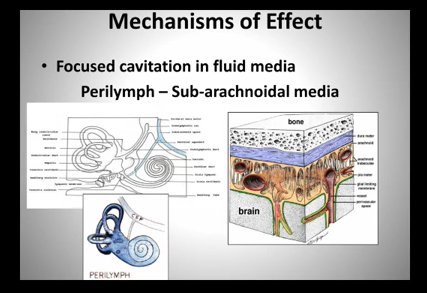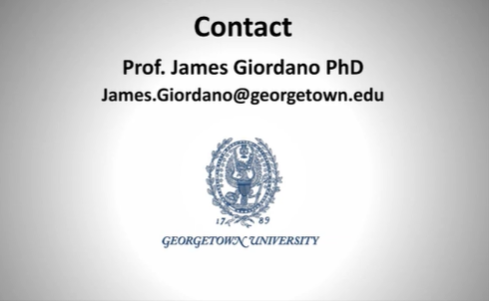Neuroimaging studies have enhanced our understanding of the physiological mechanisms underlying the effects of tDCS on behaviour (Hunter et al., 2013). Magnetic Resonance Imaging (MRI) and Spectroscopy (MRS) have provided insights into alterations of functional connectivity and changes in neurotransmitter concentrations following stimulation (Stagg et al., 2009, Clark et al., 2011, Polanía et al., 2012, Sehm et al., 2013, Amadi et al., 2014). However, the effects of tDCS have been proposed to be temporally-specific (Stagg and Nitsche, 2011), suggesting that the use of millisecond-resolution far-field electrophysiological methods, such as Electroencephalography (EEG) and MEG, may be particularly advantageous.
To date, the majority of studies combining tDCS and EEG/MEG have not used the techniques concurrently, instead focusing on the changes that occur after the period of stimulation (Polanía et al., 2011, Venkatakrishnan et al., 2011, Jacobson et al., 2012, Neuling et al., 2012, Spitoni et al., 2013). Soekadar et al. (2013) published the first concurrent tDCS–MEG study, in which a motor paradigm was used to elicit responses in the alpha and beta bands.
This work focused on the feasibility of combining the techniques and found no adverse effects of stimulation on the quality of data. Since this first study, the concept of concurrent tDCS–MEG has been promoted as a potential method to study the underpinnings of tDCS' behavioural effects. By linking observable modulations of electrophysiological activity (such as cortical oscillations; Thut et al., 2012) to electrical stimulation, this work should help to establish increasingly refined applications of tDCS in both health (through cognitive and behavioural research) and disease (as a treatment option for neurological/psychiatric disorders).
Gamma oscillations (> 30 Hz) are an appealing target for tDCS modulation due to current theories linking their generation to the excitation/inhibition balance (Buzsáki and Wang, 2012). For example, fluctuations in gamma oscillations of hippocampal pyramidal cells in rats have recently been shown to rely upon the dynamic modulation of excitation and inhibition (Atallah and Scanziani, 2009). Accordingly, enhancement in the synchrony of pyramidal cell firing is said to be propagated by a release from inhibition exerted by inhibitory post-synaptic currents (IPSCs) on GABAergic interneurons (particularly basket cells: Hasenstaub et al., 2005, Bartos et al., 2007).
This suggests that pyramidal-interneuron relations are integral to the generation of gamma oscillations (Gonzalez-Burgos and Lewis, 2008). The importance of the excitation/inhibition balance has also been supported by a pharmacological MEG study, incorporating the GABAA agonist Diazepam (Hall et al., 2010). Gamma power was increased in the visual cortex, which was proposed to reflect enhanced efficiency of fast inhibitory processing. Furthermore, the administration of alcohol, which is thought to increase GABAA mediated inhibition and diminish glutamatergic excitation via NMDA receptors, has been shown to increase the amplitude of responses in the gamma band within visual and motor cortex (Campbell et al., 2014).
Oscillations in the beta band (15–30 Hz) have been proposed to be modulated by similar mechanisms to those in the gamma band (Jensen et al., 2002, Yamawaki et al., 2008). Using a resting MEG paradigm, the administration of Diazepam increased beta power and decreased peak frequency (Jensen et al., 2005). Using a basic biophysical model, the authors concluded that the elevation in beta amplitude was driven by an enhancement in the synchrony of pyramidal cell firing, driven by increased IPSC delay times that decreased the influence of inhibition and subsequently reduced beta frequency. Additionally, the GABA Transporter 1 (GAT-1) blocker Tiagabine has been shown to influence the frequency and power of event related desynchronisation (ERD) and post movement beta rebound (PMBR) responses (Muthukumaraswamy et al., 2013a). A further study compared the effects of Zolpidem (a GABAA agonist with similar mechanisms to benzodiazepines) on slice preparations and human participants, finding that it increased beta power in both samples (Rönnqvist et al., 2013).
This proposal of causal links between the balance of cortical excitation and inhibition and the relative power of beta and gamma oscillations, suggests that oscillatory measures are ideal targets to investigate the effects of direct current stimulation on the brain. As scalp-applied anodal tDCS has been shown to increase glutamatergic transmission (primarily through NMDA receptors) and decrease GABA mediated responses (Liebetanz et al., 2002, Nitsche et al., 2003, Nitsche et al., 2004), anodal tDCS should affect gamma and beta band responses measured in MEG. However, compared to the literature highlighting the effects of cortical polarisation on motor (Nitsche and Paulus, 2001), visual (Antal et al., 2004a) and somatosensory (Matsunaga et al., 2004) evoked potentials, few studies have directly investigated the influence of DC stimulation on induced responses. Although the limited in vitro evidence (Bikson et al., 2004, Reato et al., 2010, Reato et al., 2014) and that acquired during in vivo investigations of beta and gamma oscillations in humans (Antal et al., 2004b, Polanía et al., 2011, Mangia et al., 2014) suggests that modulations of these rhythms should be observed.
To further the current understanding of the mechanisms underlying the effects of DC stimulation, the present study aimed to demonstrate the influence of tDCS on beta and gamma band oscillatory activity, using a combined visuomotor task (previously used by Muthukumaraswamy et al., 2013b). Task data was recorded prior to, during and after anodal and sham stimulation. Electrode configurations were designed to target primary visual and motor cortices during separate sessions. As research investigating links between tDCS and changes in oscillatory power is in its infancy, hypotheses relating to the expected effects of tDCS were generated in accordance with relevant literature (such as the outlined pharmacological-MEG research). With regard to the gamma rhythm, based on literature stating that anodal tDCS produces a decrease in GABAA-mediated inhibition (Stagg and Nitsche, 2011), it was predicted that anodal stimulation, compared to the sham control measure, would have the opposite effect to that found following the consumption of alcohol (known to increase the efficiency of GABAA receptors and increase inhibition; Campbell et al., 2014). Specifically, the tDCS-induced decline in inhibition was predicted to generate short IPSC durations and sporadic pyramidal cell activity (Hasenstaub et al., 2005), which would produce a decrease in gamma power. In the beta band, it was predicted that anodal stimulation would decrease the power of the ERD response and increase that of the PMBR, again by reducing GABAergic inhibition. These hypotheses are in accordance with work by Muthukumaraswamy et al. (2013a), which demonstrated that an increase in endogenous GABA levels produced opposite effects in these measures.
Materials and methods
Subjects
16 subjects took part in the study (10 males). All were aged 23–40 years (M = 27.50, SD = 4.65), had corrected-to-normal vision and were right-hand dominant (Edinburgh Handedness Inventory, Oldfield, 1971). Upon expressing an interest in taking part in the study, subjects were screened to determine their eligibility to take part in tDCS and MEG research. Those with any contraindications were excluded from the study. Participants gave written informed consent prior to taking part in the study and all procedures were carried out with the approval of the local ethics committee (School of Psychology, Cardiff University).
Visuomotor paradigm
Participants viewed a visual stimulus composed of a vertical, stationary, square-wave grating, presented on a mean luminance background at maximum contrast with a spatial frequency of 3 cycles/degree. The visual grating subtended 8 degrees, horizontally and vertically, and featured a green fixation dot at the centre of the stimulus. The stimulus was programmed using the MATLAB Psychophysics Toolbox (Brainard, 1997, Pelli, 1997) and was presented via a Mitsubishi Diamond Pro 2070 monitor. The size of the screen was 1024 × 768 pixels with a frame rate of 100 Hz. The monitor was positioned outside of the magnetically shielded room (MSR) and was viewed through a gap in the shield, at a distance of 2.15 m. The stimulus duration was set to 1.5–2 s and was followed by a 3 s baseline period, where only the fixation dot was presented (Fig. 1). Subjects were instructed to attend to the fixation point at all times and to perform an abduction of their right index finger upon stimulus offset. The abduction responses (duration period, 1 s) were recorded via the acquisition computer.
This work focused on the feasibility of combining the techniques and found no adverse effects of stimulation on the quality of data. Since this first study, the concept of concurrent tDCS–MEG has been promoted as a potential method to study the underpinnings of tDCS' behavioural effects. By linking observable modulations of electrophysiological activity (such as cortical oscillations; Thut et al., 2012) to electrical stimulation, this work should help to establish increasingly refined applications of tDCS in both health (through cognitive and behavioural research) and disease (as a treatment option for neurological/psychiatric disorders).
Gamma oscillations (> 30 Hz) are an appealing target for tDCS modulation due to current theories linking their generation to the excitation/inhibition balance (Buzsáki and Wang, 2012). For example, fluctuations in gamma oscillations of hippocampal pyramidal cells in rats have recently been shown to rely upon the dynamic modulation of excitation and inhibition (Atallah and Scanziani, 2009). Accordingly, enhancement in the synchrony of pyramidal cell firing is said to be propagated by a release from inhibition exerted by inhibitory post-synaptic currents (IPSCs) on GABAergic interneurons (particularly basket cells: Hasenstaub et al., 2005, Bartos et al., 2007).
This suggests that pyramidal-interneuron relations are integral to the generation of gamma oscillations (Gonzalez-Burgos and Lewis, 2008). The importance of the excitation/inhibition balance has also been supported by a pharmacological MEG study, incorporating the GABAA agonist Diazepam (Hall et al., 2010). Gamma power was increased in the visual cortex, which was proposed to reflect enhanced efficiency of fast inhibitory processing. Furthermore, the administration of alcohol, which is thought to increase GABAA mediated inhibition and diminish glutamatergic excitation via NMDA receptors, has been shown to increase the amplitude of responses in the gamma band within visual and motor cortex (Campbell et al., 2014).
Oscillations in the beta band (15–30 Hz) have been proposed to be modulated by similar mechanisms to those in the gamma band (Jensen et al., 2002, Yamawaki et al., 2008). Using a resting MEG paradigm, the administration of Diazepam increased beta power and decreased peak frequency (Jensen et al., 2005). Using a basic biophysical model, the authors concluded that the elevation in beta amplitude was driven by an enhancement in the synchrony of pyramidal cell firing, driven by increased IPSC delay times that decreased the influence of inhibition and subsequently reduced beta frequency. Additionally, the GABA Transporter 1 (GAT-1) blocker Tiagabine has been shown to influence the frequency and power of event related desynchronisation (ERD) and post movement beta rebound (PMBR) responses (Muthukumaraswamy et al., 2013a). A further study compared the effects of Zolpidem (a GABAA agonist with similar mechanisms to benzodiazepines) on slice preparations and human participants, finding that it increased beta power in both samples (Rönnqvist et al., 2013).

































No comments:
Post a Comment